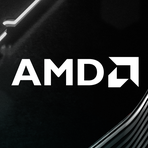The AI Infrastructure Race: Building Tomorrow's Data Centers Today
July 2, 2025, 4:01 pm
The race for artificial intelligence supremacy is heating up. Companies are no longer satisfied with mere proof-of-concept. They want results. The shift from flashy demos to real-world applications is underway. But there’s a catch. The data centers that power these AI innovations are under immense pressure. They were built for transactional workloads, not the heavy lifting of AI. As models grow in complexity, the strain on these facilities intensifies.
Enterprises are facing a perfect storm. Compute power, cooling, and space are all at a premium. The old ways of doing things are no longer viable. Technology leaders must rethink their strategies. They need to start from the ground up. The data center of yesterday cannot support the AI demands of tomorrow.
To navigate this challenge, server consolidation is key. New-generation CPUs offer a solution. They come with dozens, even hundreds, of cores. This massive parallelism is essential for efficient data processing. One AMD EPYC™ server can replace seven older models. This consolidation frees up space for AI-specific clusters. It also reduces power consumption, cutting operational costs. The savings from consolidation can fund future AI investments.
For new infrastructure, sticking with x86 architectures simplifies scale-outs. This allows enterprises to retain existing applications. Pre-optimized libraries and containers can accelerate deployment. The right tools can make all the difference.
The current reset in enterprise data centers is bold. It’s a multi-year journey. Modernizing CPUs, designing flexible architectures, and embedding security are all part of the plan. The right decisions today will establish a future-ready infrastructure. This infrastructure must keep pace with the rapid evolution of AI.
The recent acquisition of X (formerly Twitter) adds another layer to xAI’s strategy. Valued at $33 billion, this move enhances xAI’s reach and capabilities. The combination of debt and equity financing reduces capital costs. It expands the financial resources available for innovation. This funding will support the development of cutting-edge AI solutions.
Enterprises are facing a perfect storm. Compute power, cooling, and space are all at a premium. The old ways of doing things are no longer viable. Technology leaders must rethink their strategies. They need to start from the ground up. The data center of yesterday cannot support the AI demands of tomorrow.
The Squeeze is On
Data centers are feeling the squeeze. CPU resources are maxed out. Storage and network bandwidth are stretched thin. Adding more racks of AI-capable hardware isn’t the solution. Floor space is limited. Power and cooling demands are skyrocketing. Aging infrastructure is a burden. It diverts funds and talent away from innovation. This infrastructure debt is a tax on progress.To navigate this challenge, server consolidation is key. New-generation CPUs offer a solution. They come with dozens, even hundreds, of cores. This massive parallelism is essential for efficient data processing. One AMD EPYC™ server can replace seven older models. This consolidation frees up space for AI-specific clusters. It also reduces power consumption, cutting operational costs. The savings from consolidation can fund future AI investments.
A Marathon, Not a Sprint
Adopting AI is a marathon, not a sprint. The pace of AI tooling is rapid. Infrastructure lifecycles, however, span years. Enterprises must act quickly to capitalize on short-term gains. But to sustain success, they need a flexible, scalable infrastructure. This will shorten deployment timelines and avoid costly code rewrites. The right compute resources are crucial. Deep learning requires high memory bandwidth and parallel processing. CPUs can handle smaller inference tasks efficiently. Combining CPUs with GPUs offers a pathway to tackle larger models.For new infrastructure, sticking with x86 architectures simplifies scale-outs. This allows enterprises to retain existing applications. Pre-optimized libraries and containers can accelerate deployment. The right tools can make all the difference.
Security in the Age of AI
As AI becomes more embedded in enterprises, security stakes rise. High-performance AI relies on diverse hardware spread across multiple nodes. Ensuring a secure environment is complex. Even encrypted data can be vulnerable in virtualized settings. Confidential computing is no longer optional. It’s a baseline requirement. Hardware-level protections keep data encrypted, even in memory. This creates a trusted boundary across heterogeneous clusters. Security features can also protect I/O paths, mitigating insider threats.Partnerships Matter
Strategic clarity is essential. It’s not just about capital investment. Choosing the right partners is crucial. Vendors with a comprehensive AI compute portfolio can streamline integrations. They reduce risks associated with future pivots. A proven track record in scaling production is vital. Companies need partners who can deliver on their promises.The current reset in enterprise data centers is bold. It’s a multi-year journey. Modernizing CPUs, designing flexible architectures, and embedding security are all part of the plan. The right decisions today will establish a future-ready infrastructure. This infrastructure must keep pace with the rapid evolution of AI.
The xAI Factor
In this landscape, xAI is making waves. Founded by Elon Musk, the company has raised $10 billion in debt and equity. This funding enhances its capacity to develop the Grok AI chatbot. xAI is not just another player; it’s a contender. With 200,000 GPUs installed in Memphis, it’s building a supercomputer for AI training. Musk’s vision includes a million GPU facility outside the city. This ambitious plan positions xAI to compete with giants like OpenAI and Anthropic.The recent acquisition of X (formerly Twitter) adds another layer to xAI’s strategy. Valued at $33 billion, this move enhances xAI’s reach and capabilities. The combination of debt and equity financing reduces capital costs. It expands the financial resources available for innovation. This funding will support the development of cutting-edge AI solutions.
